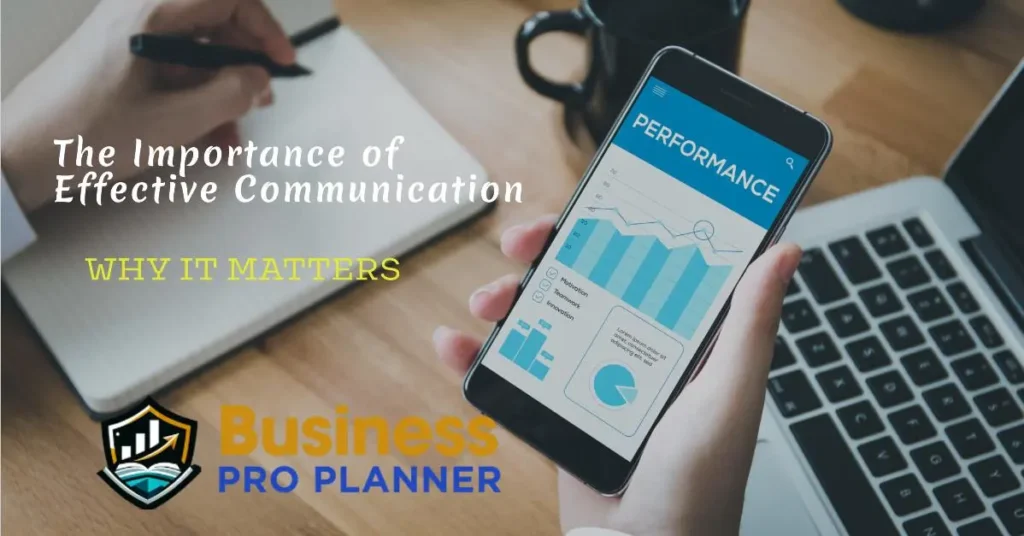Communication value in a way that truly resonates with customers is imperative for product and service companies striving to acquire, develop, and retain customers in an increasingly competitive landscape.
Yet many businesses fail to effectively convey how they differentiate from alternatives and why their offerings are worth the pricing strategy.
This article will explore best practices for communicating value across marketing and sales touchpoints. We will also discuss common pitfalls that prevent companies from landing their value messages and explore the key components of a value-based marketing strategy.
Key Takeaways
- Effectively communicating differentiation and value is critical for business communication to attract and retain customers in a crowded marketplace.
- Companies often focus too much on product features rather than customer benefits and fail to quantify the value delivered.
- By researching your audience, identifying competitive advantages, crafting resonant messaging, and personalizing content, brands can convey value propositions powerfully.
- Components of a value-based marketing strategy include developing the value proposition, positioning against competitors, profiling the ideal customer, and mapping touchpoints.
- Presentations, demonstrations, ROI calculators, and other tools can provide the proof and reinforcement needed to back up your value claims credibly.
Why Value Communication Matters
At its core, effective value communication comes down to actually understanding your target audience and what they care about.

It’s about framing your messaging around tangible outcomes and advantages rather than product features.
Customers don’t buy features – they buy solutions to problems and needs. Brands that communicate value in a way aligned with customer motivations will always have the upper hand.
Drives Discovery and Conversion
Top-notch value communication raises awareness and consideration amongst potential new customers.
For example, conveying how you help customers accomplish goals or overcome pain points better than alternatives, pique interest and drive inbound traffic and sales conversations.
Highlights Differentiation
No two brands deliver value in the same way. The most successful companies identify their unique differentiation and bake that into their value messaging across channels.
Doing so enables them to stand apart from competitors and gives customers compelling reasons to choose them over alternatives addressing similar needs.
Develops Loyalty and Retention
The pre-purchase stage represents just one phase of value communication. Brands seeking loyalty and retention must also provide relevant, tailored value messaging after the sale.
This could include educational materials, training, community access, and reminding customers of the ongoing return they get from the brand.
Understanding Customer Value
Effective value communication starts with understanding what truly creates value for your target audience. Instead of assuming what customers want, take the time to research their needs, priorities, pain points, and goals. What problems is your product or service uniquely positioned to solve? How does it help customers save time, reduce costs, or achieve important outcomes? Focusing on demonstrable customer value is key to differentiating your offering and resonating with buyers.
Conduct Research
Some ways to gain insights include conducting customer interviews, running surveys, analyzing support tickets, or monitoring social media. Ask open-ended questions to learn what outcomes matter most without leading responses. Review competitors’ messaging to see which value propositions resonate and which fall short. Customer feedback will help refine your value story and ensure your value messages address what genuinely drives purchasing decisions.
Communicate Value Through Multiple Channels
Today’s buyers research extensively online before engaging in sales. To stand out among competitors, you must strategically communicate your value story across channels at each stage of the buyer’s journey. Beyond your website, consider:

- Paid Media and Ads: Target potential customers with relevant keywords and messages that resonate. Positioning in paid search, display, social and email should convey outcomes for their industries or roles that prompt lookups.
- Content Marketing: Educate prospects on your domain expertise and industry trends through blogs, articles, eBooks, and other highly-shared content. Incorporate case studies and facts to build credibility around how your solution delivers tangible impact.
- Conferences and Events: Leverage industry gatherings to demo your offering in person and connect with hard-to-reach stakeholders. Capture leads and qualify opportunities through presentations, booths or sponsorships focused on your unique customer outcomes.
- Sales Collateral and Demos: Provide sales reps with one-pagers, case studies, videos, and other collaterals showcasing measurable results. Give prospect demos context by highlighting specific customer benefits upfront and letting outcomes shine through.
- Partnerships and Integrations: Align with complementary solution providers and showcase how you add value together. Join industry groups to position your company as a thought leader and gain referral opportunities from trusted networks.
With consistent, outcome-focused messaging across these channels, prospects receive the same clear picture of your solution’s most compelling benefits relevant to their needs and goals. Positioning reinforced throughout the buying process makes your value proposition easy to comprehend and choose.
Express Value Through Storytelling
Data, specs, and features alone rarely inspire action. Bringing your value proposition to life through compelling stories engages audiences and builds a deeper understanding of how your offering can truly impact businesses. Well-crafted stories convey value by showing real transformation and results customers have achieved.
- Leverage Customer Journeys: Highlight a typical customer’s specific challenges, why past attempts fell short, and how partnering with your company changed outcomes. Include colorful before/after comparisons with quantified impacts where possible. Relatable journeys create empathy and build credibility.
- Profile Diverse Case Studies: Feature customers across industries and sizes to illustrate broad applicability. Varying case studies minimize perceptions your solution only benefits certain types of buyers. Including a spectrum keeps your value messaging relevant to diverse prospects at differing stages.
- Incorporate Testimonials and Social Proof: Customer quotes, reviews, media mentions, or industry awards validate your value claims with unbiased third-party perspectives. Ask delighted customers for permission to feature their businesses in collateral. Social proof gives wary prospects confidence your solution can benefit them too.
Together, stories, journeys, case studies, and social proof paint a compelling picture of your product or service tangibly impacting real companies’ bottom lines. They translate technical specs into digestible examples of how key outcomes are achieved across various scenarios. Storytelling brings data to life and triggers prospect empathy, keeping value top-of-mind throughout engagements.
Barriers to Effective Value Communication
Communicating value effectively is crucial, yet many companies struggle to convey their differentiation and worth clearly. Why does this value messaging break down so frequently?
- Over-Reliance on Features: One of the most common pitfalls is emphasizing product features rather than corresponding advantages and outcomes for customers. Every feature should tie clearly to a customer gain. For example, instead of explaining how a software platform’s dashboard visualizations help managers make faster, data-driven decisions, brands ramble on about configurable chart types. They fail to connect the dots between capabilities and customer jobs to be done.
- Using Industry Jargon: Many B2B companies fall into the trap of littering their communications with technical jargon or language only meaningful to internal stakeholders. This prevents conveying value clearly to customers. Especially in B2B scenarios, brands bombard audiences with technical jibber-jabber like “proprietary predictive analytics algorithm”. This leaves prospects baffled rather than clarifying why they can’t live without your solution.
- Failing to Quantify Value: It’s difficult for messages to land effectively when value is discussed only in vague, qualitative terms. Putting concrete numbers around ROI, money or time savings makes communication memorable.
- Nothing Numerical: Claims about value delivery sound hollow when not backed up numerically. Whether copious cost savings, 3X faster processing, or 99.999% uptime, putting hard numbers around benefits makes messages memorable.
Components of a Value-Based Strategy
Getting your value communication right requires an integrated strategy encompassing various domains from branding to sales.
- Value Proposition Development: At the heart lies crafting value propositions addressing target customer needs better than alternatives. These become statements pervading all touchpoints.
- Competitive Positioning: Determine where your offerings excel or trail competitors so you can play to your communication strengths while improving on weaknesses.
- Ideal Customer Profiling: Personify key segments beyond basic demographics to uncover their motivations and channels. This enables tailored outreach.
- Journey Mapping: Chart your audience’s path from awareness through advocacy. Identify key moments where communicating value drives decisions forward.
Best Practices for Communicating Value
Here are some tips for crafting and disseminating compelling value communication across your sales and marketing activities:
- Research Your Audience: Gaining a strong grasp of your customers’ perspectives allows you to identify their pain points and true motivations for buying. Build personas and continually gather insights into their needs.
- Identify Differentiators: Assess your offerings’ strengths and weaknesses compared to alternatives. This enables honing in on your competitive advantages most meaningful to communicate from a customer standpoint.
- Craft Resonant Messaging: Choose language, framing, and proof points that speak directly to the outcomes your audience cares about achieving or the hurdles they want to overcome.
- Quantify Value: Where possible, move from vague statements about delivering value to specifics around ROI, money saved, time savings, or other concrete ways you help customers.
- Reinforce with Visual Assets: Charts, graphs, calculator tools, and other visual resources can quickly communicate key advantages in a digestible, convincing fashion.
- Personalize Content: Tailor value messaging to specific customer segments whenever feasible. Doing so forges deeper connections than a generic, one-size-fits-all approach.
Bringing Value Communication to Life
Brands must move beyond empty claims by bringing their value and differentiation tangibly to life across interactions.
- Sales Presentations: Set up or share screens visualizing through charts or graphs how you accelerate critical workflows, and improve accuracy or other advantages over alternatives prospects care about.
- Product Demos: Let prospective audiences take test drives showing off key differentiators addressing their needs and pain points better than current solutions.
- ROI Calculators: Online tools quantifying efficiency gains, expenses reduced or other cost-benefit metrics make the case for purchasing concrete.

Conclusion
In summary, effectively communicating value requires understanding audiences, isolating differentiators they appreciate, and quantifying benefits delivered through customer-centric messaging and assets.
What steps will you take to convey true resonance and proof points aligning with audience motivations? The brands that master value-based communication reap the rewards in revenue and loyalty.
